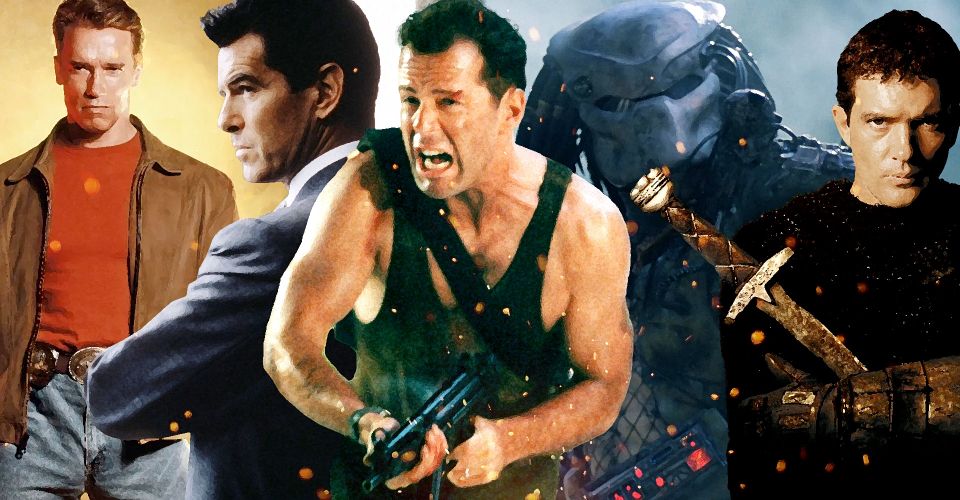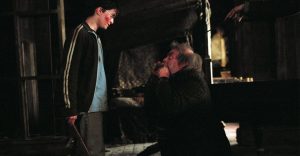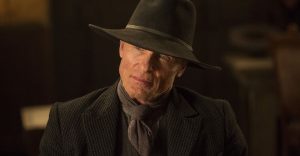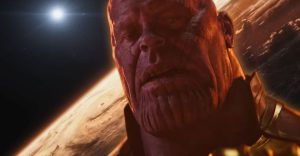Every John McTiernan Movie Ranked From Worst to Best

Director John McTiernan is often labeled as one of the greatest action directors of all time, having helmed some of the most well-known action classics, from Predator to Die Hard to Last Action Hero and beyond. McTiernan has had a tremendous impact on not only the action genre, but the creative style used by filmmakers looking to convey convincing, effective, and exciting action in their films. McTiernan puts on a masterclass of the moving camera, making use of tracking, steadicam, crane, dolly, zoom, and whip-pan shots so effectively that they become a part of his visual language and style. His love of natural lighting effects, including lens flares and blemishes that would otherwise be deemed problems, are instrumental in his style and enhance the flash and sleekness of his vision.
McTiernan attended Juilliard School, then graduated from the AFI Conservatory, studying under a number of master filmmakers before beginning his career. He started small with Nomads in 1985, which caught the attention of Arnold Schwarzenegger, who hired him for Predator as a result. The rest is history, as McTiernan then went on to direct the one-two punch of Die Hard and The Hunt For Red October, both of which cemented him as a premier filmmaker in the action/thriller department. From there, McTiernan took a strange detour with Medicine Man starring Sean Connery, then lost the gamble on the big-budget flop that would be Last Action Hero.
He rebounded with Die Hard With A Vengeance and The Thomas Crown Affair, but struggled again with budget and creative control with The 13th Warrior. Sadly, McTiernan’s last two efforts, Rollerball and Basic, were shadows of his true potential. They are the last of his feature films to date after legal woes sent him to prison for a year and derailed his career completely. McTiernan has had many announced projects since, but nothing that’s been brought to fruition. While it’s possible that he may find feature work again, it’s already been nearly 20 years since he’s stepped foot in that arena. Whether he ever directs again or not, there’s no denying the overall impact and influence he’s had on the industry, fellow filmmakers, and the action genre on the whole. Here are his rankings, from worst to best:
#11 – Rollerball (2002)

A remake of the 1975 original post-apocalyptic thriller of the same name starring James Caan and directed by Norman Jewison, McTiernan’s take on Rollerball falls short in every conceivable way. Gone is the social c0mmentary and hardcore violence that made the original so compelling, replaced instead with a WWE-like sensibility that focuses on flashiness over substance, never really succeeding in that role either. It didn’t help that the cast did little to elevate the material, being led by less-than-seasoned actors like Chris Klein, LL Cool J, and Rebecca Romijn. Jean Reno is wasted as the main villain, leaving no chance that the film could be saved by any performance at all. Numerous rewrites, reshoots, and a switch from an R to PG-13, Rollerball was a complete creative mess, barely retaining any semblance of McTiernan’s usual slick, kinetic style, with strange camera and editing choices that make it near unwatchable.
#10 – Nomads (1985)

McTiernan’s first film, Nomads, is one that feels pulled right out of the obscure horror section at Blockbuster, but gives an early tease at the director’s potential. Pierce Brosnan stars (in his first feature-film lead role) as a French anthropologist who becomes obsessed with a group of “punks” who seem interested in his home, where a murder had previously taken place. Brosnan begins following and photographing them, only to discover that they are a group of demonic spirits in human form. A game of cat-and-mouse ensues as both Brosnan and the demons go back and forth antagonizing one another. The narrative is choppy, the characters one-dimensional, and the villains about as scary as goth cosplayers. Still, even if the story, script and performances are severely lacking, McTiernan shows a sense of style, presence, and energy with the camera, which would become his career signature.
#9 – Basic (2003)

McTiernan almost earned his stripes back with Basic, after the disastrous Rollerball debacle. Basic is a military thriller that toggles between present-day and flashbacks, focusing on an Army training exercise gone wrong, resulting in a number of mysterious deaths. The ensuing investigation is led by John Travolta’s DEA agent character, who assists the military officer (Connie Nielsen), in unraveling the Rashomon-style mystery that’s a bit too convoluted to be effective. The military references are wildly inaccurate and the action is fairly scant, but Basic is far more “McTiernan” than his previous effort, with the tricky, stylized cinematography and A-grade actors adding the much-needed heft to make it engaging. It’s hardly a classic and never reaches the heights in storytelling or action to make it anything more than a decent one-off watch that’s easily forgotten, but there’s still some McTiernan resonance to keep it afloat.
#8 – Medicine Man (1992)

The strangest entry in McTiernan’s resume, Medicine Man stars Sean Connery as a medical researcher in the Amazon jungle, searching for a cure for cancer, which he finds, then loses. A biochemist (Lorraine Bracco) is quickly sent by the pharmaceutical company that’s funding him to deliver supplies and check on his progress. Things get tricky when a logging company paving their way through the forest threaten the natural resource that Connery’s character needs in order to replicate the cure. It’s an odd tale for McTiernan to tackle, as if he took a purposeful detour from the action genre t0 make Medicine Man, which has all the stylistic trimmings that make a McTiernan film noticeable, but barely a shred of the action and suspense that made his prior (and later) films so distinct. A great score by Jerry Goldsmith and decent performances from the two leads isn’t enough to save Medicine Man from mediocrity, but it at least feels like McTiernan is invigorated by the material, even if the audience isn’t.
#7 – The 13th Warrior (1999)

Based on the novel “Eaters of the Dead” by Michael Crichton, The 13th Warrior (originally titled and marketed as Eaters of the Dead) stars Antonio Bandaras as an Arabic ambassador who gets caught up in a Viking quest to stop a mysterious threat that is terrorizing a village across the sea. Loosely based on the classic poem “Beowulf”, the film starred mostly unknown Nordic actors as the Vikings and suffered delays, reshoots, and poor test screenings, leading to McTiernan being replaced for reshoots and re-editing. McTiernan’s original cut was deemed “unwatchable” by some sources, with Crichton taking over to make it more commercial and palatable to audiences. The film has an Earthy feel to it, with much of McTiernan’s signature camerawork on display, but is lacking in cohesive action throughout, save for a few moments. Critically and commercially the film was a flop, but has gained significant cult notoriety over the years with a deeper appreciation for the McTiernan/Crichton hybrid that it is, rather than the refined adaptation that it should’ve been.
#6 – The Thomas Crown Affair (1999)

The slickest film in McTiernan’s resume is The Thomas Crown Affair, starring Pierce Brosnan as a wealthy art thief who falls in love with the woman investigating him (Rene Russo), while still trying to get away with his crimes. A remake of Norman Jewison’s 1968 thriller starring Steve McQueen and Faye Dunaway, McTiernan puts a modern spin on the classic yarn, giving it style, energy, and elegance, making it a sleeker version of Jewison’s original. Brosnan and Russo have magnetic chemistry, which goes a long way in selling the heart of the film. McTiernan feels inspired and focused here, making full use of his visual language with camerawork, cinematography, editing, music, and an engaging supporting cast, including Denis Leary, Frankie Faison, Ben Gazzara, and a cameo appearance from original star Dunaway.
#5 – Die Hard With A Vengeance (1995)

After directing the now-classic original, McTiernan came back for a third Die Hard, reuniting him with Bruce Willis, this time in a ticking-clock style story for the franchise that has Willis’ McClane facing off with a vengeful nemesis (Jeremy Irons), who has him completing a series of dangerous tasks throughout the city in an effort to stave off a bombing. Samuel L. Jackson plays a reluctant partner to McClane as they navigate each task, getting closer and closer to the real threat. Die Hard With A Vengeance has McTiernan’s stylistic flair and plenty of big-action moments and scenarios, which serve as a kind of NYC tourist version of Die Hard. The supporting cast, while strong, get a bait-and-switch side story that ends up being a waste of screen time, which is a shame given the talent involved. Sadly, the ending falls apart as well, being reshot from a quieter, more tense finale between Willis and Irons to be a more bombastic one, failing to reach the rousing conclusion it built toward. A satisfying entry in the Die Hard franchise, but not as refined as McTiernan’s original.
#4 – Last Action Hero (1993)

A box office flop in 1993, Last Action Hero has since become a cult smash, as time and distance have proven it to be a brilliant expose on the action genre, while also contributing to it at the same time. Written by Shane Black, Zak Penn, and Adam Leff, Last Action Hero finds Arnold Schwarzenegger as Jack Slater, a franchise character in the movie-within-a-movie, who is the walking embodiment of the action movie super cop. Things get crazy when a young boy with a magical movie ticket (Austin O’Brien) is transported into the movie and interacts with Slater, unraveling his entire world. The two team up to stop a mastermind criminal (Charles Dance) from crossing over into the real world, which could open up all manner of unwanted trouble. The dialogue and wit are sharp, ahead of their time for 1993, and Schwarzenegger is in great form, embodying Slater with ease, humor, and presence. McTiernan uses all the tools from his creative toolbox for Last Action Hero, leaning into the tropes, idioms, and stereotypes of the genre he helped create, while still making a slick, raucous ride of a movie, that is by far the most fun of his filmography.
#3 – The Hunt For Red October (1990)

Based on the novel by Tom Clancy, The Hunt For Red October is McTiernan’s most effective thriller and the best Clancy adaptation to date. Starring Alec Baldwin as Jack Ryan, the CIA analyst who constantly finds himself in globe-spanning predicaments, The Hunt For Red October follows a Russian sub commander, played by Sean Connery, who is attempting to defect to the U.S. during the Cold-War era. What develops is a cat-and-mouse game of political intrigue and deceptive maneuvering that creates one of the best sub thrillers of all time. McTiernan goes all in here, taking his lessons learned off of Die Hard and Predator and applying them across the board to make a tense, ticking-clock atmosphere that’s ripe with suspense from beginning to end. McTiernan makes the film feel epic in scope, but never skimps on character, with each player, even those with just one scene, feeling like they’re a part of the intricate story.
#2 – Predator (1987)

One of the greatest sci-fi/action films of all time, Predator introduced audiences to a new kind of alien creature that has since remained in the cultural zeitgeist. Written by Jim and John Thomas, Predator focuses on a colorful special ops team led by Arnold Schwarzenegger who are tricked into a rescue mission by Carl Weathers’ CIA operative, finding themselves being hunted by a mysterious, trophy-collecting alien warrior who starts killing them one by one. Full of big-gun action, macho swagger, and gory kills, Predator reinvigorated the alien invader genre, giving it a sharp, fun twist, while creating an atmosphere of intensity that keeps the audience on their toes from beginning to end. McTiernan keeps the camera moving, the action consistent, and the shots strategically placed, making the events unfold in a mirage of beautifully orchestrated aesthetics. Predator is an exercise in skillful action cinema, a feat not often replicated and one that McTiernan would perfect with his next film, Die Hard, taking it beyond the exceptional execution exhibited with Predator.
#1 – Die Hard (1988)

Often considered the greatest action film of all time, Die Hard is McTiernan’s signature film. Starring Bruce Willis in his first lead role and Alan Rickman in his first-ever film role, Die Hard launched both actors into stardom. Fresh off Predator, McTiernan took his skill set to the next level, balancing a strong, diverse cast to create interesting, impactful characters throughout, be it hero, villain, or bystander. Die Hard‘s suspenseful action is sharply balanced with quick wit, humor, and emotional beats in all the right places. The action is rousing, loud, and bloody, lending a sense of realism to the chaos. McTiernan shows a true understanding of the visual language of his craft, letting images, camera moves, music cues, and human reactions do some serious heavy lifting while giving the audience some of the most iconic action scenes of all time. Some argue over Die Hard‘s status as a Christmas movie, others debate its merits as the best action movie ever, but almost everyone can agree that it’s the finest work from McTiernan, standing as the crowning achievement of his unique sensibilities.
About The Author

















